
We monitor pH, dissolved oxygen, turbidity, and temperature with equipment purchased from the HACH Company, which has its world headquarters in Loveland, Colorado. The equipment purchased for this project came with a price tag ranging from $600 to $1,300 each. The program has also received, by a generous donation, six meters (two of each type) from FPL Maine Energy Hydro, Inc., and three meters (one of each type) from The Nature Conservancy.
A typical kit includes one HACH HQ40d Multimeter (with one probe to measure conductivity and another to measure dissolved oxygen) and one HACH 2100Q Turbidimeter. The Commission has five kits in total, purchased in 2018, on account of the grant awarded to SRCC from the Maine Outdoor Heritage Fund, that helps to support critical wildlife and conservation projects throughout Maine.
With five complete kits, we have the basics necessary to manage an effective water quality monitoring program, over a five-day period every other week, with a grand total of 38 locations throughout the Saco River Watershed.
pH
To monitor pH we use the HACH IntelliCAL™ PHC201 Probe in conjunction with the HACH HQ40d meter. This probe has a measurement range of 0 to 14 units. These probes must be calibrated by the Water Quality Coordinator every day, to ensure pH measurement accuracy.
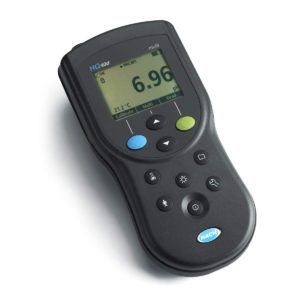
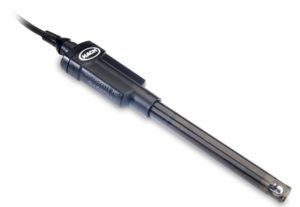
To monitor dissolved oxygen, we use the HACH LDO10105 probe which has a range of 0.05 to 20.0 mg/L and 1 to 200% saturation. The LDO101 is fitted with an automatic pressure sensor module and a temperature sensor. The dissolved oxygen sensing cap comes with an iButton to track days in use and remind remaining life of the sensing cap element. To measure conductivity, we use the HACH CDC40105 probe which has a range of 0.0 µS/cm to 200 mS/cm. Both probes are attached to the HACH HQ40d Multi meter, and temperature data is collected by both probes. The temperature range for each probe is -10 to 110 °C .
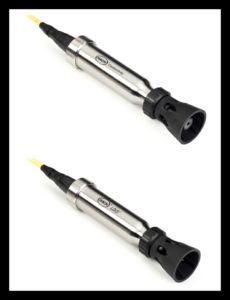
To monitor turbidity, we use the HACH 2100Q Portable Turbidimeter. This meter has a measurement range of 0 to 1,000 nephelometric turbidity units (NTUs). Individual cell bottles are filled, dried, and cleaned using microfiber cloth and silicone oil before being placed into the meter. Two readings are recorded on the field data sheet.
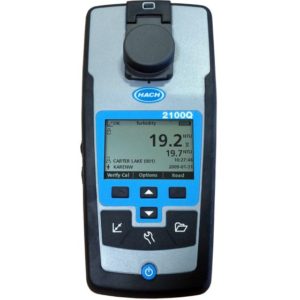
Although we gather temperature information from both Dissolved Oxygen and Conductivity probes, we have a non-mercury Pocket Thermometer as well for quality assurance purposes. The range for this device is -5 to 45° C. Our primary temperature readings are taken from the pocket thermometer.

Our volunteers gather water samples for the E. coli testing by using a sterile 120 ml IDEXX container with 100 ml fill line. In order to obtain coliform information, our volunteers must obtain a 100 milliliter sample aof water, taken at least 6 inches below the surface. These samples are obtained below the surface to ensure that there are no possible contaminates from the surface water that could alter the results. These samples are put on ice for transportation to the SRCC office, where they are analyzed in-house using the Quanti-Tray System purchased from IDEXX Laboratories. Colilert and Enterolert media is combined with the collected samples, transferred to trays which are separated into 51 wells, and sealed using the Quanti-Tray Sealer. Samples are then incubated for 24 hours. As the bacteria metabolize the media, a process takes place which alters the color (in E. coli samples using Colilert) and fluorescence of the solution. After incubation, the staff determines the bacteria levels of the samples by counting the number of positive wells based on color and/or fluorescence. The holding time for coliform is not to exceed six hours.
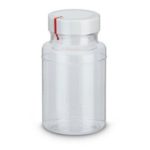
Our volunteers gather a 60 mL water sample in a container that has undergone a special acid wash procedure. The reason behind the acid wash is that phosphorus is an extremely sensitive parameter and this will help ensure a clean bottle and an accurate testing result. This sample is transported on ice back to the Commission Office, and frozen until it is transported to the University of New Hampshire.
Our volunteers and coordinator gather a 250ml water sample that is transported on ice back to the Commission Office. Once in the office, we use a 47mm Swinnex Holder equipped with Hydrophilic Membrane filters and a 60ml syringe, to filter the water sample into a 60ml acid-washed bottle. It is then frozen and later transported to the University of New Hampshire for analysis.
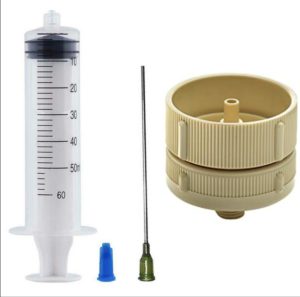
Our volunteers again gather a 250 mL water sample in a container that is transported on ice back to the Commission Office. Once back in the office, we filter the sample through a special material and pour the water into a bottle that has underdone the same acid wash procedure as the one used for the total phosphate sample. This sample is also frozen until transported to the University of New Hampshire.
The volunteer gathers a separate 250 mL water sample that is transported on ice to the Commission office and filtered, using Hydrophilic membrane filters, into a 125 ml acid-washed bottle. The sample is then frozen and transported to the University of New Hampshire once a month.
If you’re interested in becoming a volunteer, please contact the office for more information.
The Saco River Corridor Commission is committed to protecting public health and safety and the quality of life for the state of Maine. The commission regulates land and water uses, protects and conserves the region’s unique and exceptional natural resources, and prevents the detrimental impacts of incompatible development. The commission was established in 1973.